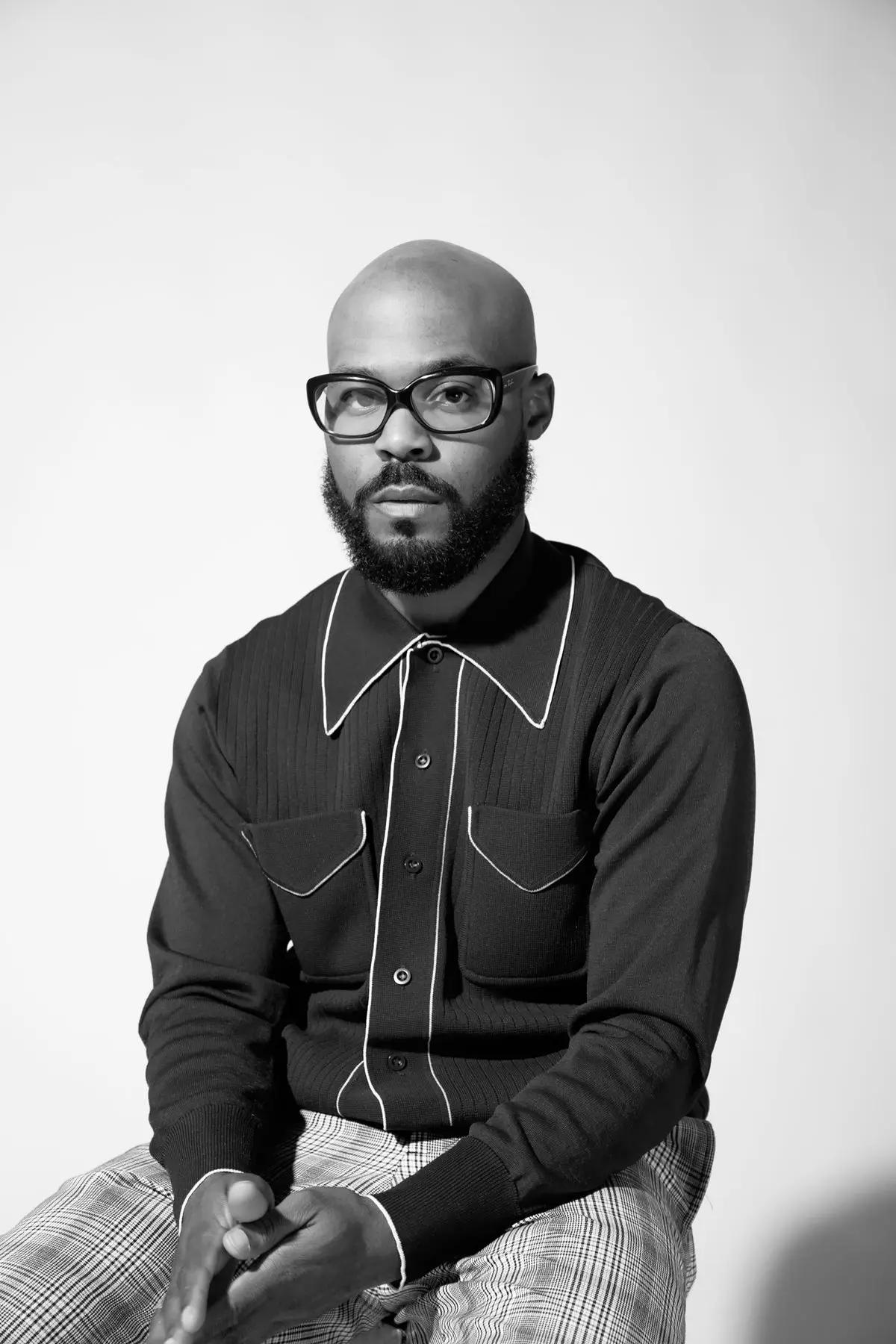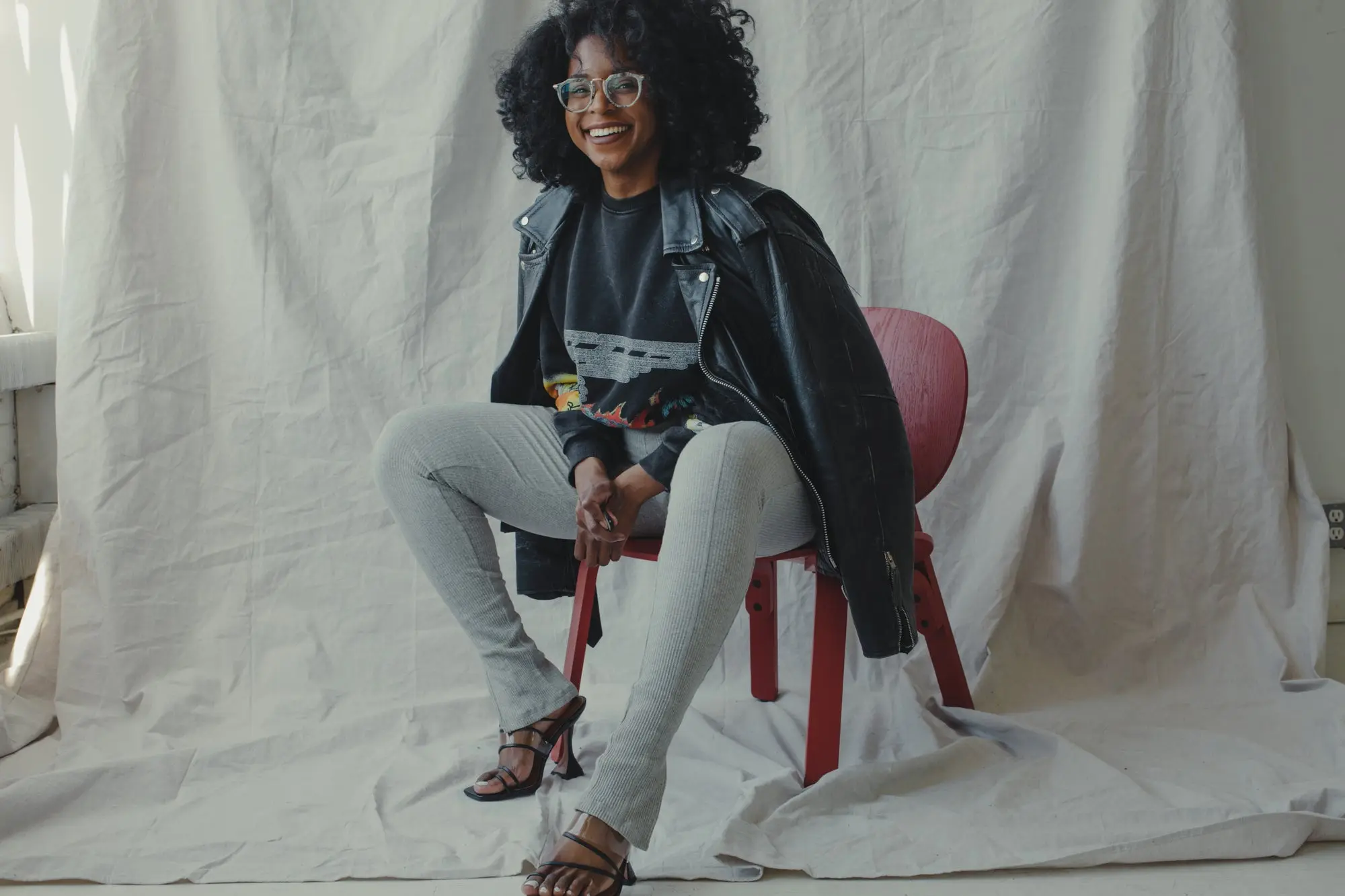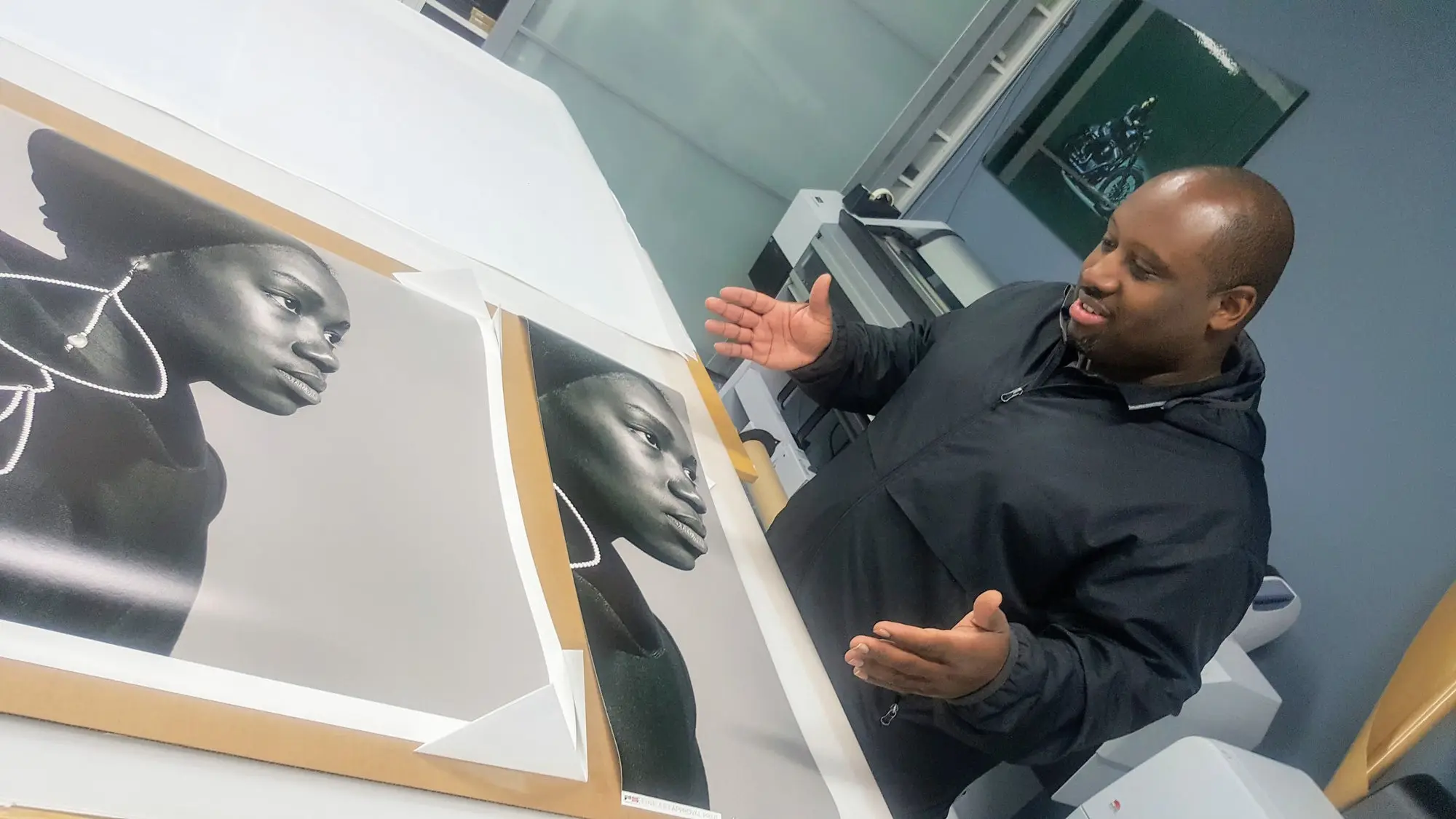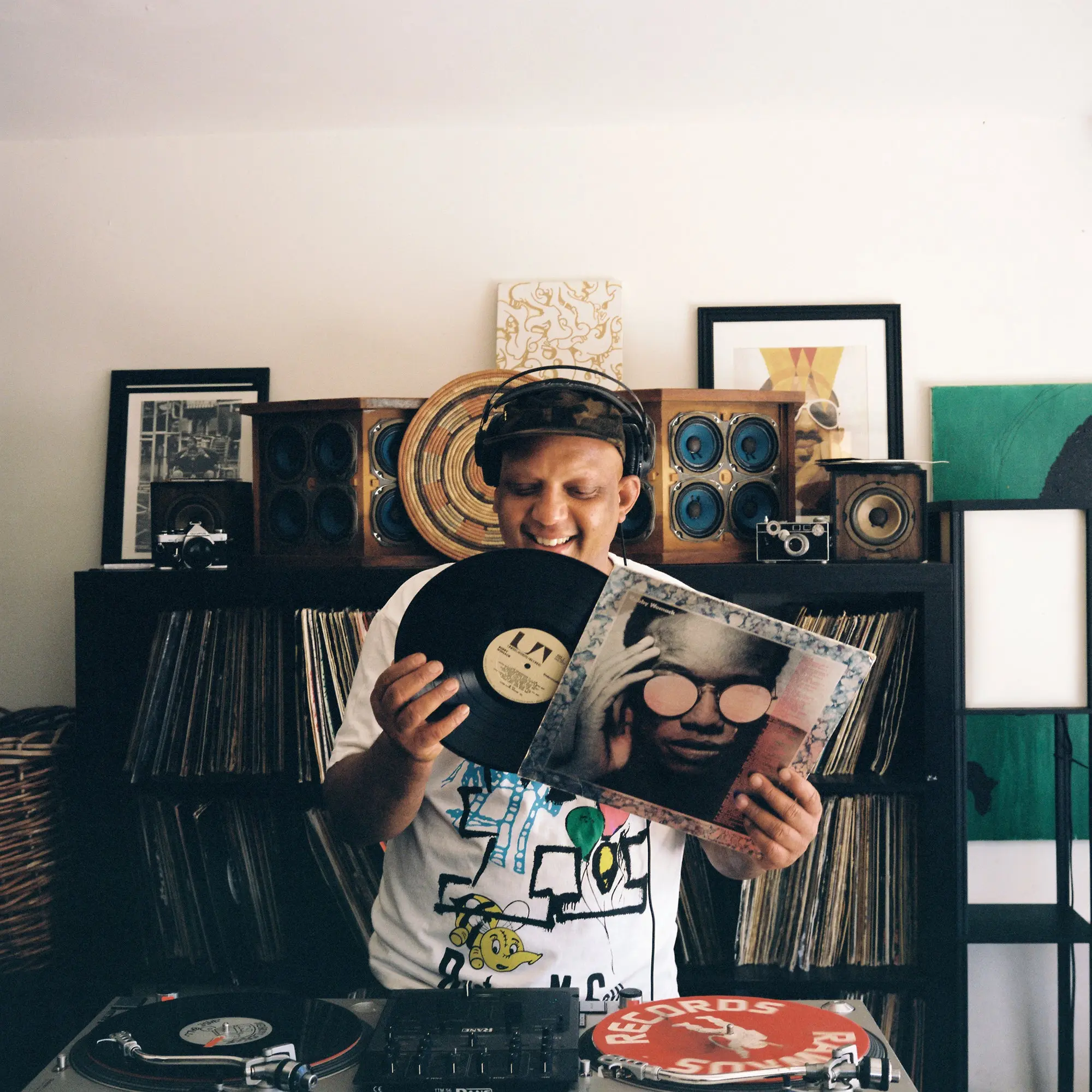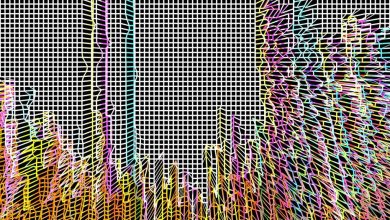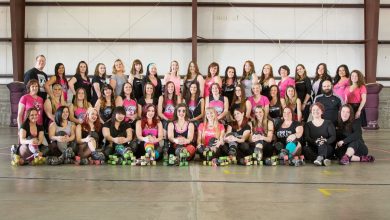Adobe and Black Archives: Living Archive Series

Announcing a six-month partnership with Black Archives, highlighting emerging Black artists through short documentary profiles and providing grants to continue their work.
As part of our ongoing mission to spotlight the stories, artwork and perspectives of Black creators around the world, we’ve kicked off a six-month partnership with Black Archives, highlighting emerging Black artists through a series of short documentary profiles and providing grants to continue their important work.
Now, we’d like you to meet the artists and share in their stories.
Contents
Russell Hamilton
Multidisciplinary artist
Born and raised in Atlanta, Georgia, multidisciplinary artist Russell Hamilton is a first-generation Jamaican currently based in Los Angeles, California.
Growing up in Atlanta while being raised in a Jamaican household, Hamilton was “very nomadic” in his creativity. The photographer-turned filmmaker says that his roots have had a profound impact on his work.
“I can kind of go anywhere and be able to communicate with people, even being here in Los Angeles — this is like the third leg of my experience,” says Hamilton. “I can represent people and communicate with them and find the similarities amongst the cultures, mostly the diaspora as a whole,” he says. “I think that something that kind of resonates with my work is that there’s just like a cohesiveness that no matter where I’m at, there’s something very similar about the people, about the body language, about the moments that I’m capturing, that all kind of relate to each other.”
As a kid, Hamilton was surrounded by photography. One of his earliest memories was being fascinated with being photographed, and flipping through family albums. After high school, Hamilton decided to take his craft more seriously. What started as a vehicle to meet people and travel, has since become much more than that.
For his next chapter, Hamilton wants to dive more into film and filmmaking. He says that film has sharpened his eye as a photographer. “You have to be way more intentional about what you’re doing because there are only so many frames on a roll.”
He’ll be traveling back home to Atlanta and Jamaica soon to focus on creating more feature-length films and documentaries, and hopes to publish some books of his work as well.
“I don’t think work in the digital space gets the shelf life that it deserves,” he says. “I want to get into more books, prints, and film, things that you can revisit.”
Black Archives is a platform that Hamilton often revisits as a reference for his work. “It’s so important that someone champions us and the work that we are documenting,” he says. “So much of ourselves gets lost in these other archives. But I think the importance of Black Archives is that it brings it straight to the people and allows us to champion ourselves and see ourselves in different areas.”
Noémie Marguerite
Photographer & Filmmaker
Noémie’s first subject was herself. By starting with self-portraiture, Noémie says it gave her a unique understanding of what a potential client may need help with when it comes to posing and direction or learning the use of shadows and highlights. She also notes that self-portraiture helps “bring out a level of authenticity and vulnerability” to a certain extent in others.
During her time at The University of Georgia, Noémie was never without her camera. After graduating, she found herself working at a startup until she was ultimately laid off in 2018. It was at that moment when she decided to take the leap and pursue photography as a full-time career. From that experience, she learned the importance of “trusting the process” and “creating your ‘yes.’”
“The most important thing is to create your ‘yes’. We’ve all had no’s, and some of those no’s we feel like should have been yeses, and they weren’t, for whatever reason. So, don’t wait for your yes — just create it yourself,” says Noémie.
One way Noémie creates her own “yes” is by creating a lot of personal work. She says, “it’s not the commissions that get you there — it’s brands and people seeing what you’re able to do with the resources that you have. And then they’re kind of like, oh, well, if they’re able to create this on their own, imagine what happens when we fund them. And so that is your yes creation.”
When asked what she wants to create next, Noémie wants to connect back to her roots and tell the stories of Congolese women. “People have seen different stories involving Black women, and people have seen different stories involving African women, and now I want to be even more specific and tell stories about Congolese women.” Her passion for shining a light on the countless stories that have yet to be told is part of Noémie’s driving force. It’s one of the many reasons why she fell in love with the Black Archives platform.
“Black Archives shows how the choice of living is incredibly radical. I’ve heard people say, Black love is radical. You know, living in your Blackness is radical, but it didn’t click for me until I saw Black Archives,” says Noémie. “We still have this generational history of creating joy for ourselves, despite the shortcomings. And I think that’s incredibly important. And it’s also important to show the range of that. It doesn’t have to be this extreme form of Black excellence — it can be as mundane as visiting your grandmother and seeing all your cousins and just enjoying that moment like that’s still amazing. That’s still profound. That’s still important.”
Kwame S. Brathwaite
Archive Director, The Kwame Brathwaite Archive
Known as the “keeper of images” to his community in Harlem, legendary photojournalist Kwame Brathwaite’s driving force was to capture the truth in each moment. “It’s always about doing right by our people,” says his son, Kwame S. Brathwaite, who is now the keeper of his father’s legacy.
Everyone has heard the phrase, “Black is Beautiful”, and Brathwaite is the man who helped popularize it, starting in the 1960’s.
For Kwame S. Brathwaite Jr., educating those who may not know that his father is the vanguard of the Black is Beautiful movement while simultaneously building and preserving The Kwame Brathwaite Archive has now become his labor of love.
Understanding that my father had done all this incredible work, but also realizing that many people have not experienced the work, for me, is a critical part of telling his story,” says Brathwaite Jr.
Brand new to archiving, Brathwaite Jr., working in corporate America, and having no experience in archiving, took on the daunting task of founding The Kwame Brathwaite Archive, now officially a 501(c)(3) non-profit.
“I had to figure out how to treat and preserve the work that he had done, but also expose people to it. The work that I felt was brilliant, iconic, and legendary and all the words that could be used to describe his work,” says Brathwaite Jr. “Being biased and being his son, I felt like, let’s get the work out there and see how people respond.”
From celebrities like Rihanna to institutions like MoMA, the National Portrait Gallery, and Aperture, the response was overwhelming. To see his father get his flowers in real-time is something, Brathwaite Jr. does not take it for granted. It’s why he especially values the work of the Black Archives platform. “They’re giving people a voice — they’re giving these archives the attention that they deserve,” he says.
Next up for Brathwaite Jr., is building the Archive — a 24/7, 365 days a year project. He also spends time running a successful real estate company and is currently working on projects focused on education, preservation, and helping other people.
Halline “Haylow” Overby
Videographer, photographer, graphic designer, DJ, and musician
Los Angeles native Halline “Haylow” Overby is the quintessential multi hyphenate creative. He is a videographer, photographer, graphic designer, DJ, and musician, carving out multiple lanes while using a multi-dimensional blueprint.
When Haylow began exploring different fields, his goal was to represent hip-hop culture. He credits his mom as the most important person in his life, for allowing him to express himself freely along every step of the journey. “She always supported my creativity, and in many ways, I think that was as valuable as her being an artist to learn from,” he says.
Haylow has been living with Alopecia for the last five years, an autoimmune disorder that causes hair to fall out. The noticeable loss of his hair and eyebrows over time has heightened his sense of creativity and has helped him sharpen his mental focus. “From an artist’s perspective, when you lose something that is part of your physical identity, it helps you focus on the true essence of what you’re producing,” he says. “Faced with the idea of losing something personal to you, the output becomes more keen.”
He draws inspiration from any and everything. In particular, throughout South Los Angeles and in his neighborhood of Leimert Park, the combination of pastel palettes, hand painted signage and mid-century architecture are what he loves. Preserving, presenting, and documenting Black, Indigenous, and people of color stories is the core of his work.
For Haylow, being included in this series serves as a humbling reminder that he is worthy of recognition. “There is so much incredible competition as an artist, but I still have confidence in my work because it comes from a perspective that only I can present,” he says. “Black Archives is just amazing, an incredible curation of photography, and Adobe is like the gold standard of creative application. It’s a huge deal for me,” he adds. “I really want to use this platform to encourage others to tell our stories through documentation, because if we don’t tell our own stories, someone else will tell them for us.”
Brittney Janae
Filmmaker, photographer and editor
Brittney Janae’s love of film and creating content fueled her passion to create a path to showcase Black women in the world of film, photography and production. She co-founded LoreneJanae, with her best friend Erica Lorene, which is a makeup and photography company highlighting women of color. It has featured celebrities like Tiffany Haddish, Eve, Common, Snoop Dog and Yara Shahidi. Growing up in St. Louis, Missouri, and later attending college at the University of Missouri, “I’ve always been creative,” Janae says. Shortly after graduation, Janae took a leap of faith and moved to Los Angeles, but often found herself questioning her decision in an industry difficult to break into.
“My advice to other Black women who want to get into this field would be to find a team and surround yourself with people that believe in you and truly want to invest in you,” Janae says. “Whenever I try to do anything important to my career, I try to bring a friend with me who wants to break into this field,” she adds.
Janae is passionate about imploring other Black women creatives to use the resources available and to simply, start creating. “I’m inspired by the natural urge to document my daily interactions through social media, which is an opportunity we didn’t have when we were kids.” Her message highlights that contrary to popular belief, it is the mutual sustenance of skill and practice that makes filmmakers, not gear. “Most people underestimate how much documenting we do daily. When we record something on our phone and upload it to Instagram, that’s a digital archive. So you don’t necessarily have to have the right equipment to feel like you’re a successful photographer. The most important equipment in your tool kit is a creative eye.”
Shefon Taylor
Collagist, writer and graphic designer

Her latest project as part of the “Living Archive” series, in partnership with Black Archives and Adobe, started with a 1967 photo of her grandmother, and ignited a spark, to turn family photos into her signature statement.
When people inquire about her identity as an artist, Taylor feels like the work she designs feels like a continuum. “I’d never really imagined or saw myself as a visual artist. In some ways, my art is just a collage of my life experiences dating back to my childhood and the memories of being raised by my grandmother and her seven sisters. That’s how I define my identity as an artist at the moment.”
The opportunity to collaborate with Black Archives is a service to everyday Black people who have been erased under the gaze of mainstream contemporary art. “You know I’m a Renata and Black Archives stan,” Taylor says. “I felt a real sense of affirmation because I wanted to highlight the importance of vernacular imagery. More Black artists need these kinds of opportunities to receive the legitimacy that we seek.”
“To emerging Black artists I would say, trust your obsessions and most importantly, don’t enroll into art school (laughs). No, but seriously, trust your obsessions. Do as much self-exploration as possible.”
The limitation of current discourse around Black excellence and representation is that it eclipses everyday people’s uniqueness doing everyday things. “My grandmother isn’t the first woman to go to space, but her story is worthy of being shared. Black girl magic is the women in our families existing and keeping our ancestry alive.”
Source : Adobe

